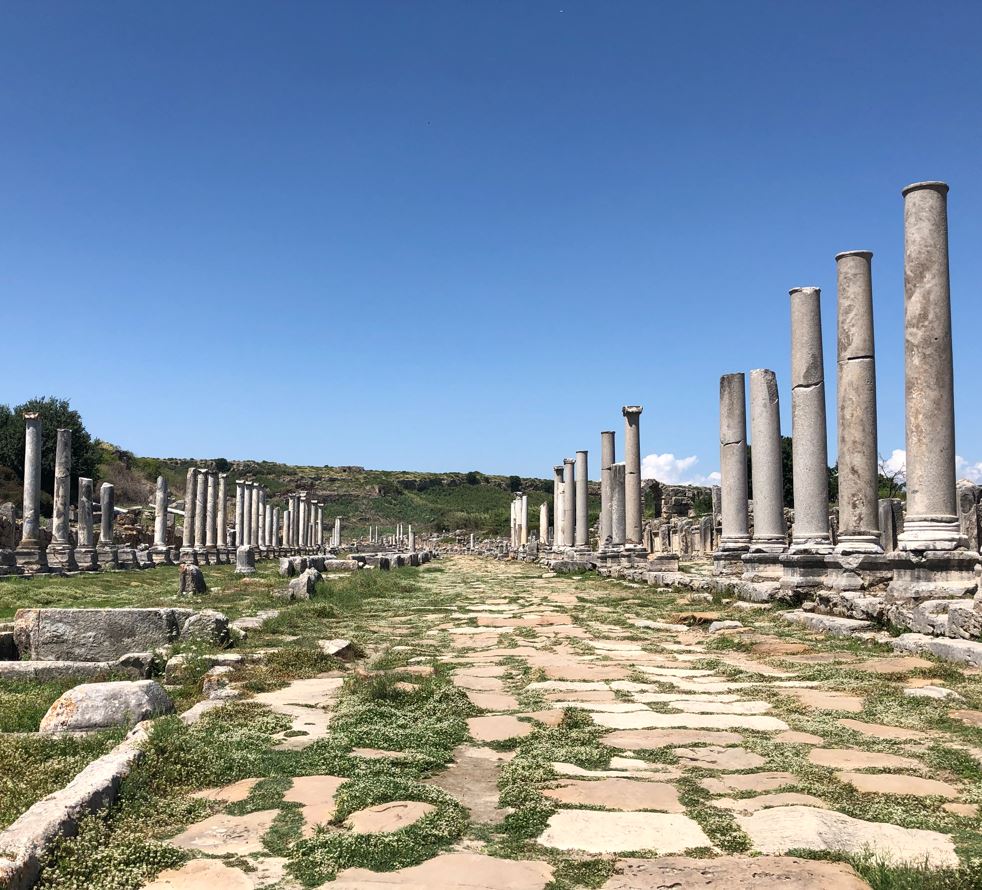Deserted temples. Columns on the ground. Crumbled boulders. Crushed stone upon stone. Cracked walls and pavements. Isolated statues. They are all mute witnesses to the ancient city of Perge, also known as Perga.
Nestled along the breathtaking shores of Antalya, some six hours drive from Turkey’s capital Ankara, Perge is a remarkable archaeological site which boasts of a rich history dating back to the Bronze Age and flourished under Hellenistic and Roman rule.
We were absolutely captivated with architectural wonders and its well-preserved onlookers of the past, which hold secrets from the old world.
Notably, this is the birthplace of influential Greek mathematician Apollonius, who developed the now-familiar — yet taken for granted — conic concepts of the circle, ellipse, parabola, and the hyperbola. And perhaps this genius rubbed off on the structures — as each was a sight to behold in their own right.
Perge was likewise mentioned in the Bible particularly in the Acts of the Apostles written by Saint Paul of the road to Damascus fame. The metropolis served as a stepping stone for other areas in central Turkey where the Apostle of the Apostles would preach the word of God.
Here are five spots you should visit on your trip to the ruins of Perge:
Columned Main Street: The Beating Heart
Our journey initially led us to the Columned Main Street, a marvel that was once the beating heart of the community and was the artery of the north-to-south direction. Twenty-two meters wide, it hosted the bustling markets and was the vibrant social hub as well. In addition, it connected to other major sites of importance.
It must be noted that unlike other settlements of yore, the gran via did not follow a perfect straight path — it wrapped around the plots erected during the Hellenistic Period.

Propylon: Gateway to the Sacred
Our next stop was the Propylon, with its towering columns and intricate carvings. It was symmetrically designed with a two-step marble covered platform, filled with smooth granite columns in Corinthian style, plus geometric and floral decorative reliefs.
This monumental entry led citizens to the sacred precinct. Built in the year 197 to 211, this impressive edifice was the introduction to the major area of Perge and was as a zone of transition to and fro the main layout.

Stadium: Sports and Laurels
Our following destination was the majestic Stadium, a 12,000-seater arena which was the venue of sporting events, from chariot races to athletic competitions. It drew in the crowds — from commoners to royalty.
It gave glimpses into the entertainment options of the aged civilization, as it showcased different seating tiers, perhaps based on one’s caste.

Hadrianus’ Arch: An Iconic Portal
We then encountered Hadrianus’ Arch, an entrance dedicated to the Roman Emperor Hadrian. This stood as a symbol of their loyalty to the Roman Empire, while also spotlighting its artistic and architectural prowess.
Through the centuries, only four pylons have survived — and yet, it remains adorned with great beauty. We stood in awe of carvings of the Greek Goddess of the Hunt Artemis, and Greek Goddess of Luck and Fortune Tykhe, alongside revered emperors Divus Augustus, Divus Nero and Divus Traianus.

Southern Bath: A Sanctuary of Ritual and Hygiene
Our final stop was the Southern Bath, one of two major hygienic and communal complexes. Dating between first to second century AD, it was embellished with sculptures known as the Three Graces, together with deities like Athena, Nemesis, Hygieia, Asklepious and Genius.
This was a congregation zone where inhabitants met not just to bathe, but also for recreation and relaxation. The interiors consisted of connecting rooms, namely, the changing quarters, then the swimming pool, a cold bath, and finally, a hot bath. They may then emerge to enjoy other physical activities.
These are our five magical postcards. What’s yours?
